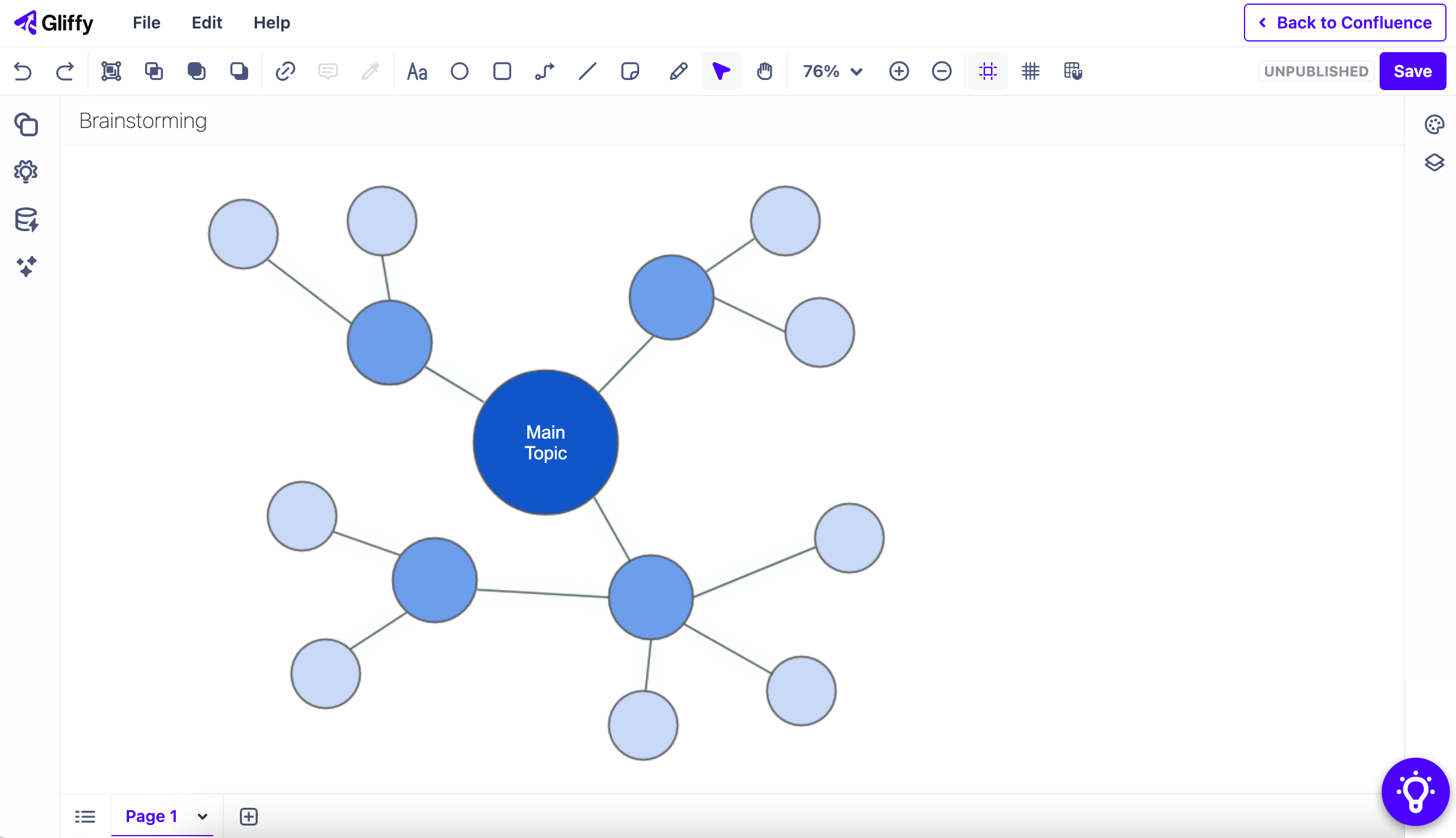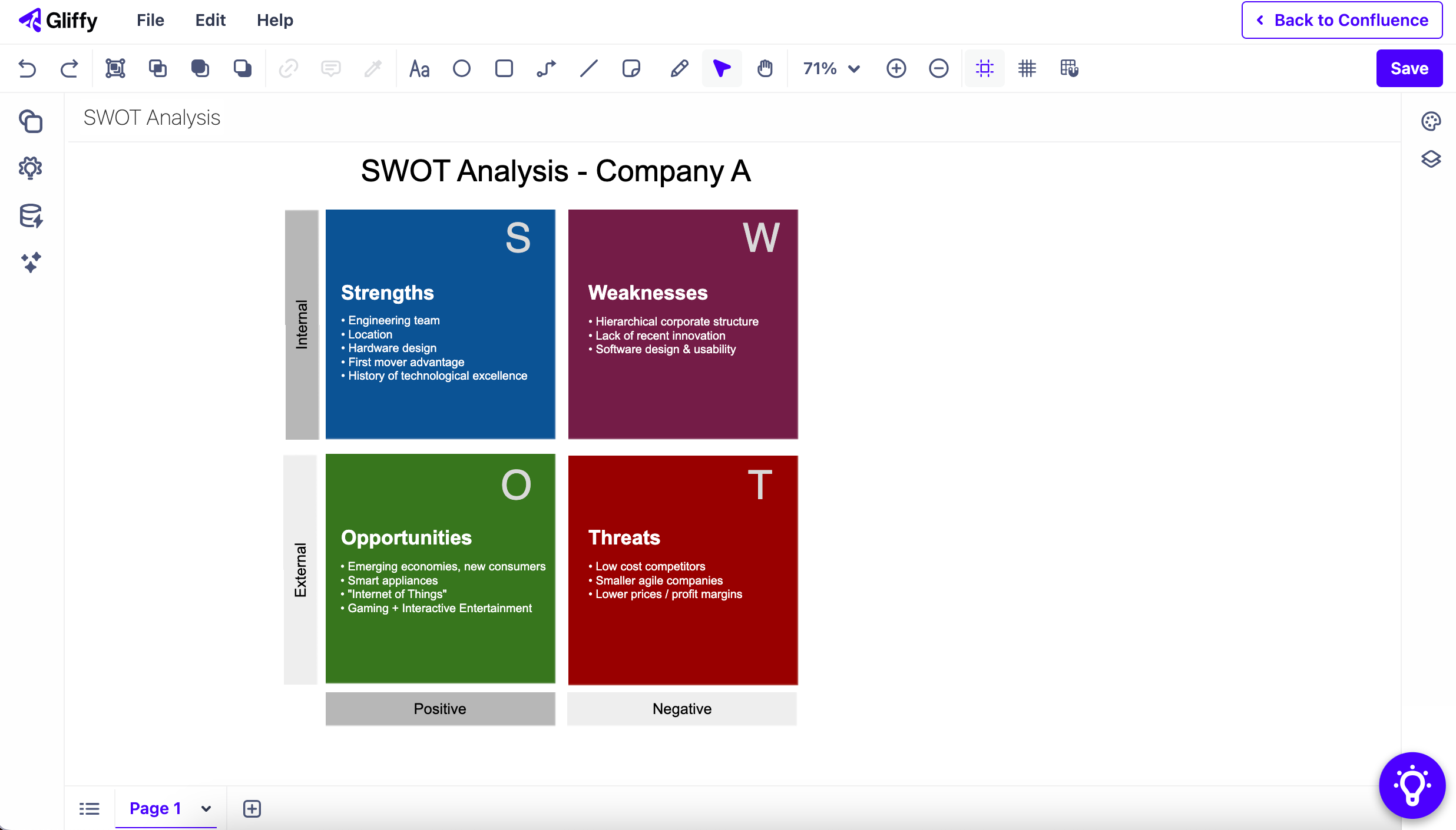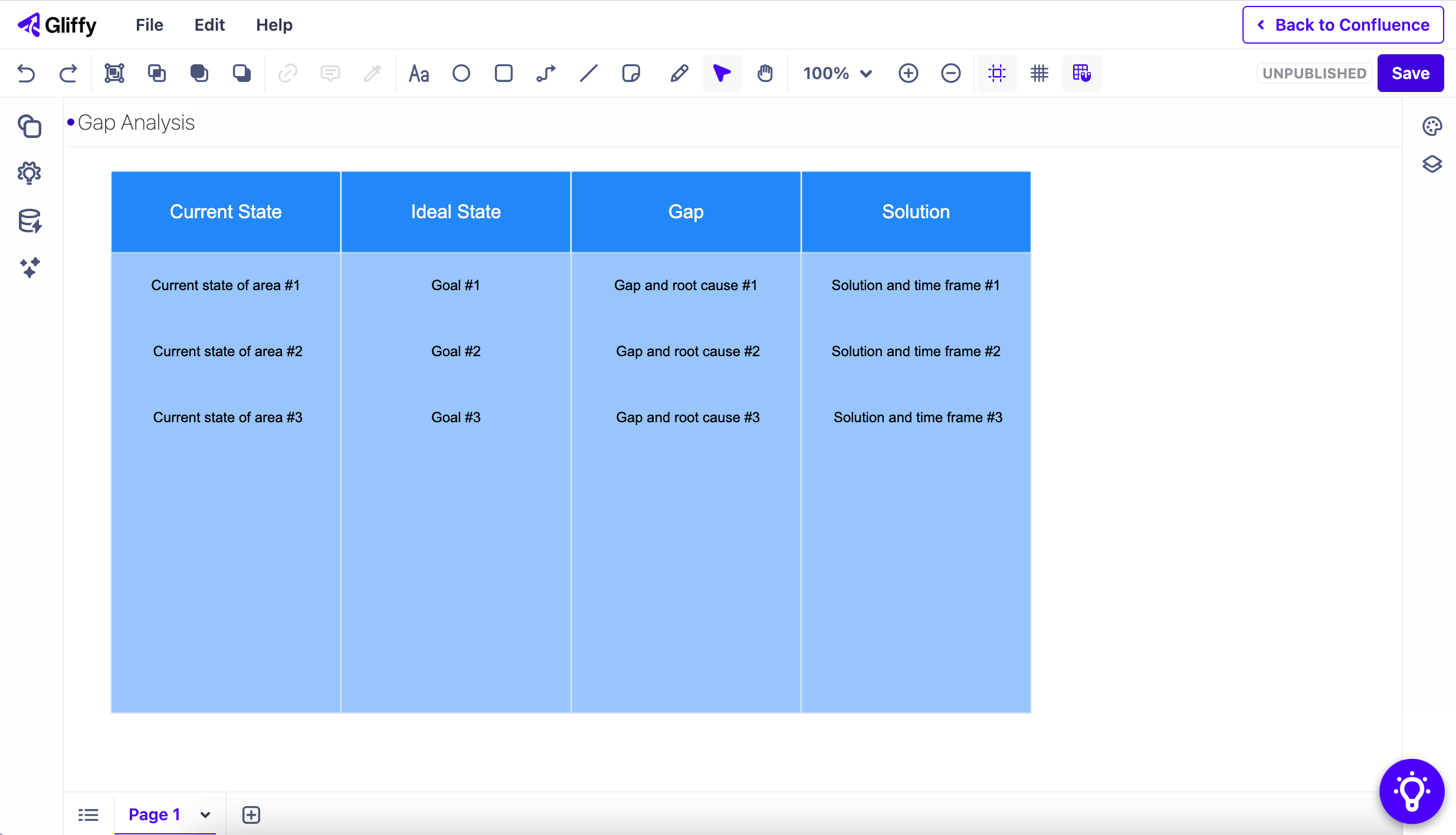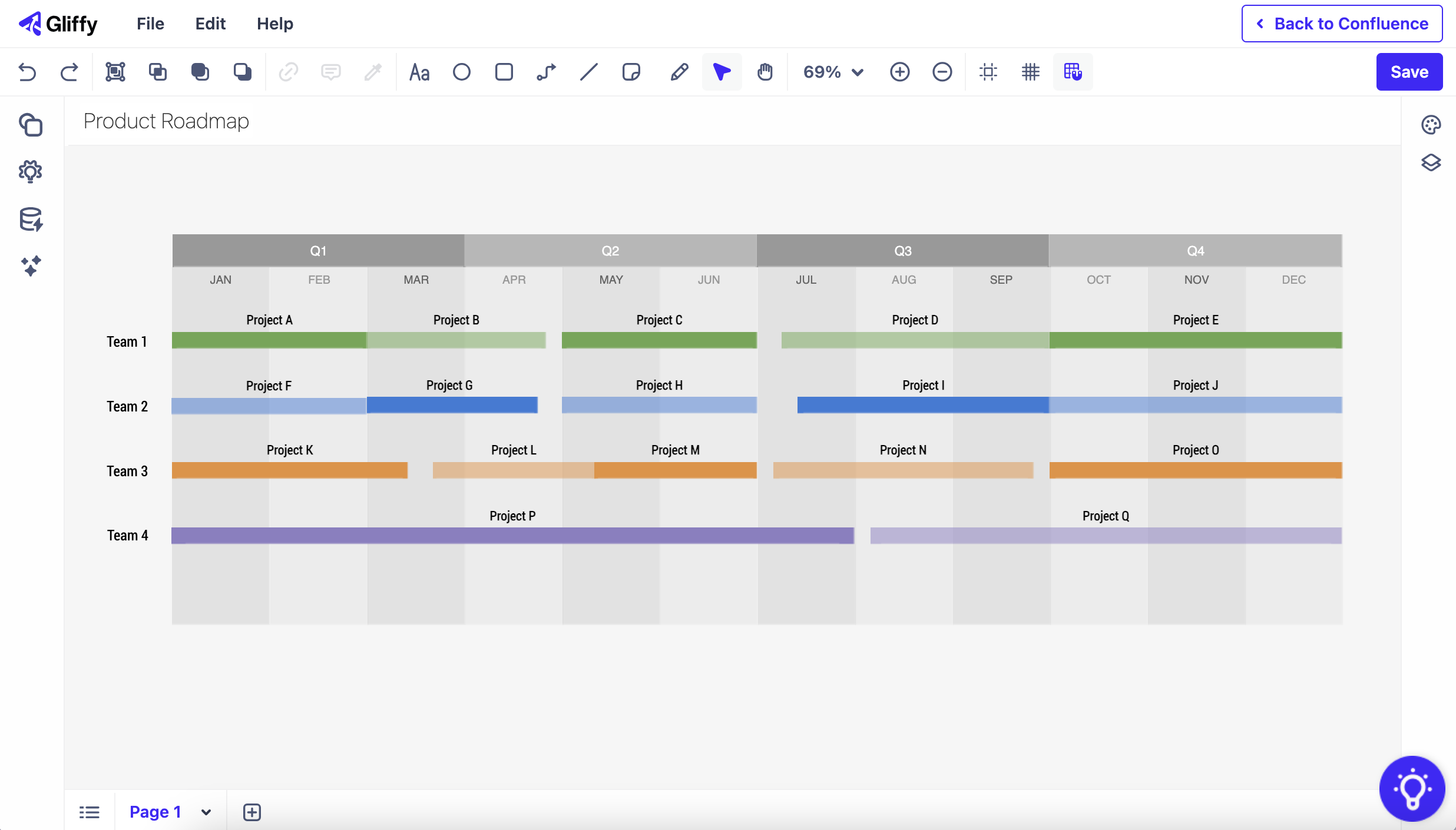Collect and Validate Your Ideas with Gliffy
Great products start with great research. Using visual frameworks to collect and validate your ideas will give you a strong foundation for future activity and help you create products that users love.
One of the best ways to tackle a new project—whether that’s a new feature or a whole new product—is by starting with a brainstorming session.
Brainstorming helps product teams:
- Align on a vision for the project
- Identify questions that need to be answered
- Think creatively and innovatively and capture new ideas

The product team’s most important responsibility when it comes to research is understanding the perspective of the user, including needs, behaviors, pain points, and influences. Creating an empathy map allows you to use your research, plus a little creativity, to:
- Organize and consolidate qualitative data from users
- Visualize the way users think and feel as they interact with the product
- Analyze and anticipate user behaviors

Many great ideas have failed due to a lack of understanding of how user behavior will impact adoption of a product. Story mapping, an approach to product discovery, closes that knowledge gap by helping you use your research to:
- Translate user stories to actionable product development steps
- Align product functionality with user needs
- Create a more user-centric product

After generating ideas through research or a brainstorming session, it’s common to end up with a lot of information but a lack of direction. Making an affinity diagram to sort ideas and identify themes is helpful when you need to:
- Organize a large amount of information to make it more digestible
- Make your research and ideas more actionable
- Summarize key concepts for streamlined communication

Understand the Market and Set Winning Strategies
Visualization helps your team lay the strategic foundation you’ll need to help your product succeed.
The first step to positioning your product is understanding the current business environment that surrounds it. This includes both internal and external factors, and is a step you can’t ignore if you want to set your product up for success. Situational analysis helps you:
- Capture the full picture of the business through different lenses
- Understand and describe where your product lives within the market
- Create a research-based path to success

SWOT analysis is one of the tried and true methods for market research, and for good reason. This framework has many benefits for understanding the internal and external factors that influence the position of a new or longstanding product. With SWOT analysis, you’ll be able to:
- Identify your own product’s strengths that act as differentiators
- Discover opportunities and be aware of threats within the market
- Lay the foundation for the strategic direction of the product

A business model canvas is a shorthand business plan that articulates your path to success clearly and succinctly. At its core, this exercise is about value—how does your product create it in a way that helps you differentiate? With a business model canvas, you can:
- Create or evaluate a new business plan
- Understand how your product matches up against competitors
- Expand or refine an existing business

Short-term goals are worthwhile and necessary, but don’t forget to consider the long-term future of your product as well. Where are you now, and what is your vision for where you’ll go? What’s currently blocking you from achieving that vision? Gap analysis helps you:
- Evaluate your product or idea within the current market
- Articulate the necessary steps to reach your long-term goals
- Ensure that your work now is helping you build a successful future

Communicate Your Product Plan
Gliffy helps product teams add visual aids to product requirements, create understanding and alignment between designers and developers, and clarify priorities.
To ensure you’re delivering on your vision for your product, keep your team on track and communicate progress with a product roadmap. It’s a high-level view that demonstrates the next 1-2 years of the product’s future, helping product managers:
- Clarify how short-term projects contribute to long-term product goals
- Get buy-in from stakeholders on important initiatives
- Provide a source of truth and timeline for the team and others

To build great products that customers use and love, you’ll need to understand how they interact with your product and how you can articulate that process. Customer journey mapping demonstrates customer or user experience, allowing you and your team to:
- Build empathy for your customer or user
- Contextualize analytics and data on user behavior
- Optimize your user experience

A picture is worth a thousand words, especially when it comes to keeping cross-functional teams on the same page about your vision for a design project. With Gliffy, wireframing has never been easier. Simply drag and drop shapes onto the canvas to create a wireframe that helps you:
- Visualize product layouts quickly and easily
- Share your vision with others
- Communicate with designers without learning a complex tool

Start a Free Trial of Gliffy’s Product Diagram Software
With best-in-class integrations for Confluence and Jira, wherever you want to collaborate, Gliffy is good to go.





